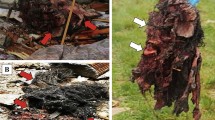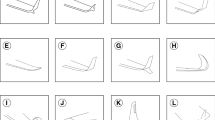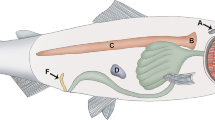The effects of inhalation exposure to a mixture containing acetone, acetaldehyde, and ethanol in concentrations typical of closed environment in space vehicles on the structure of mesenteric lymph nodes in F1 male mice were studied by histological technique. The long-term exposure to modeled atmosphere led to pronounced structural changes in these nodes that were clearly seen on day 22 and increased by day 36 of the experiment. The thickness of the capsule and trabeculae of mesenteric lymph nodes as well as diameter of lymphatic sinuses did not differ from the control values up to day 8, but then increased on days 22-70. Starting from day 22, the thickness of the medullary cords decreased and attained the minimum to the end of the experiments, which can indicate depletion of immunocytopoiesis and inhibition of humoral immunity. The present data are important for the space medicine, because they indicate structural changes in the peripheral lymphoid organs, the key elements of immune system.
Similar content being viewed by others
References
Kvaratskheliya AG, Klochkova SV, Alekseeva NT, Tutelian VA, Nikitiuk DB, Mukhamedieva LN. Morphologic changes in mesenteric lymph nodes of mice in the period of rehabilitation after completion of prolonged combined radiation and chemical exposure. Aviakosm. Ekol. Med. 2017;51(5):63-69. Russian.
Klochkova SV, Kvaratskheliya AG, Alekseeva NT, Nikityuk DB. Regeneration Potential of Lymphoid Tissue of Small Intestine in Mice after Exposure to Low-Intensity Radiation. Bull. Exp. Biol. Med. 2017;164(2):214-217.
Lesniak AT, Rykova MP, Meshkov DO, Antropova EN, Mitirev GYu, Vorotnikova IE, Konstantinova IV. Cellular immunity of human and space mission. Aviakosm. Ekol. Med. 1998;32(1):29-35. Russian.
Mukhamedieva LN. The concept of hygienic evaluation of multicomponent chemical contamination of air on piloted orbital stations. Aviakosm. Ekol. Med. 2005;39(1):14-19. Russian.
Novikov DA, Novochadov VV. Statistical Methods in Biomedical Experiment (Typical Situations). Volgograd, 2005. Russian.
Oganesyan MV, Ponomarenko EA. Morphological changes of the trachea, bronchi and lungs of mice with long exposure of chemicals present in the airspace of manned spacecraft. Ross. Med.-Biol. Vestn. 2013;21(3):23-27. Russian.
Rykova MP. Immune system of Russian cosmonauts after orbital space flights. Human Physiol. 2013;39(5):557-566.
Uyba VV, Ushakov IB, Sapetsky AO. The medical and biological risks associated with operations in deep space missions. Meditsina Ekstremal. Situatsii. 2017;59(1):43-64. Russian.
Chava SV, Buklis JV. Structural characteristics of immune formations of the mice spleen after low intensive radiated actions. Morfol. Vedomosti. 2011;(4):65-68. Russian.
Chetvertkov VS, Nikityuk DB, Shvetsov EV, Chava SV. The structural characteristic of the glandular apparatus of the mice duodenum after irradiation. Astrakhan. Med. Zh. 2012;7(4):266-270. Russian.
Author information
Authors and Affiliations
Corresponding author
Additional information
Translated from Byulleten’ Eksperimental’noi Biologii i Meditsiny, Vol. 167, No. 4, pp. 510-514, April, 2019
Rights and permissions
About this article
Cite this article
Vasyanina, K.A., Klyueva, L.A. & Klochkova, S.V. Structural Parameters of Mesenteric Lymph Nodes in Mice Exposed to Factors of Modeled Aerial Environment of Space Vehicles. Bull Exp Biol Med 167, 521–524 (2019). https://doi.org/10.1007/s10517-019-04564-3
Received:
Published:
Issue Date:
DOI: https://doi.org/10.1007/s10517-019-04564-3




